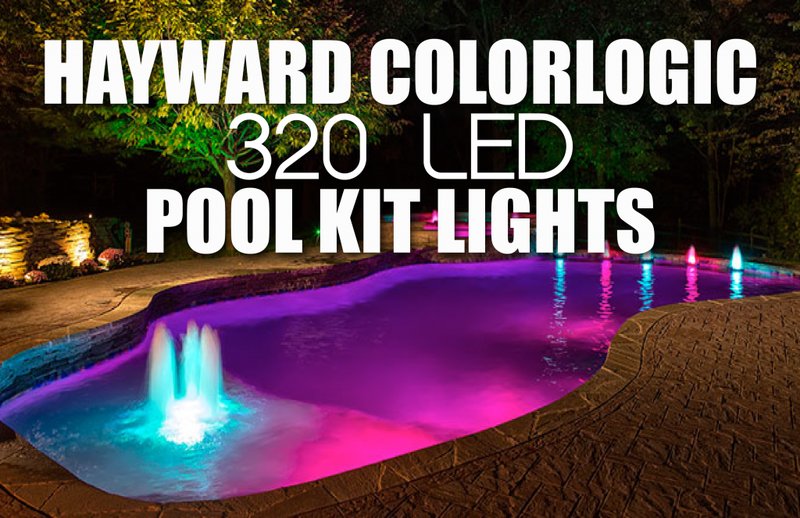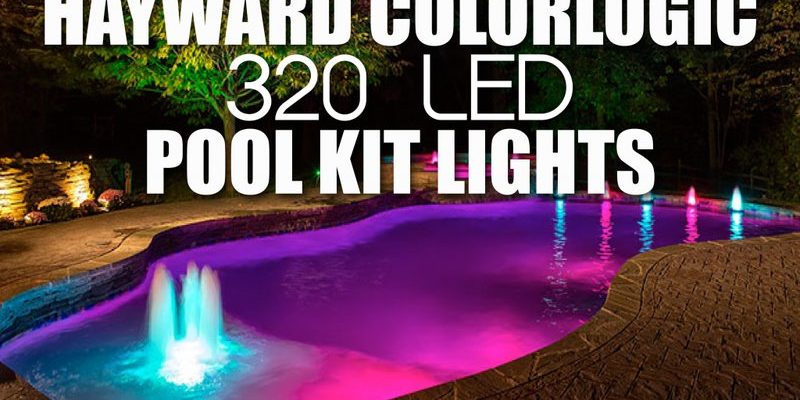
Think of your Hayward remote like the dashboard of a car. Those lights aren’t just for decoration—they’re giving you important feedback about what’s happening under the hood (or under the water, in this case). But unlike your car, the meanings aren’t always obvious, especially if you’ve never had a Hayward system before. Let’s break down what those lights mean, why they matter, and how to handle the most common situations—so you can spend more time relaxing, and less time stressing about mysterious flashes and glows.
Getting to Know Your Hayward Pool or Spa Remote
When you hold a Hayward pool or spa remote, you’re dealing with a specialized controller designed for pools and spas. You might see the Hayward AquaLogic, ProLogic, or AquaPlus names on it. These remotes can be handheld, wall-mounted, or even wireless, and they’re all about helping you control temperature, lights, water features, and more—from wherever you like to lounge around the pool.
The remote is loaded with indicator lights—often labeled “Power,” “Status,” or with icons—that provide real-time feedback. Each light, color, or blinking pattern means something, kind of like codes in a secret language. For example, a steady green might mean all systems are go, while a flashing red could mean it’s time to check the connection—or that it needs a battery change.
What’s really important is that these lights are your first clue when something’s up with your pool equipment. A quick glance at the remote can save you from fiddling with the equipment pad or making unnecessary service calls. So, understanding these signals is basically like giving yourself a cheat code to poolside peace of mind.
Decoding the Colors: What Each Light Means
Lights on your Hayward remote usually come in three main colors: green, red, and sometimes amber or blue. Here’s how to break it down:
- Green lights usually mean everything is operating as expected. If you see a solid green on “Power” or “Status,” you’re good to go. It’s like a thumbs-up from your system.
- Red lights, especially if they’re blinking, often mean there’s an issue. This could be as simple as “low battery” (for wireless models) or something more serious, like a lost connection with the main panel.
- Amber or yellow lights point to a warning—not a total failure, but something needs attention soon. Maybe it’s time to clean the salt cell or check a setting.
- Blue lights are less common, but on some models, they signal Bluetooth pairing or indicate when something is syncing or updating.
Let’s say you’re looking at your Hayward wireless remote and see the “Power” light flashing red. Honestly, that’s usually your remote’s way of saying, “Hey, have you checked my battery?” A flashing light somewhere else, paired with a beep or error code, might point you toward a specific issue—like needing to reset or pair your remote.
Solid, Blinking, or Off: Patterns Matter
Here’s where things get interesting. It’s not just the color, but also whether the light is steady, blinking, or totally off that tells the full story.
- Solid Lights: A steady light is almost always a good sign. Solid green? System’s working. Solid red? There’s a fault, but it’s stable and not a new problem.
- Blinking Lights: A flashing or pulsing light is your remote’s way of grabbing attention. For example, if the “Status” light blinks rapidly, it could mean pairing mode or that a link with the main controller is lost.
- Lights Off: No light where there should be one is a red flag. If the “Power” light is out, the remote might be dead, unsynced, or have a drained battery. Always check connections and juice first!
Let me explain with a quick story: My friend Dave called me in a panic because his remote started blinking red after a lightning storm. Turns out, the main panel and the remote lost sync, so the remote was desperately trying to reconnect. Resetting and repairing did the trick—crisis averted. You learn quickly that those patterns actually give you the roadmap for troubleshooting.
Common Light Codes and What to Do About Them
Okay, so what are the most common light codes you’ll see on a Hayward remote, and what should you do when you spot one? Here’s a breakdown:
- Solid Green Status Light: System is connected, receiving commands, and everything’s running smoothly. Enjoy the pool!
- Blinking Red Status Light: Usually means your remote is out of sync or lost its connection. Try moving closer to the receiver, or reset and repair the remote. If you just changed the battery, sometimes it needs to sync again.
- No Lights At All: Could be dead batteries (wireless), a stuck power button, or an issue with the main control panel. Start by changing the battery, then check your power source.
- Amber/Yellow Light: This often means a warning, like low salt (for saltwater pools), or scheduled maintenance coming up. No need to panic, just check your system settings or clean the filter.
- Flashing Blue Light: On some remotes, this appears during Bluetooth pairing or firmware syncing. If you see this out of the blue, try completing or canceling the pairing process.
If you’re ever truly stumped, remember: match the light and pattern to the manual’s chart. Most Hayward remotes include a little code table right in the back pages. Honestly, it’s worth keeping on hand.
How to Reset, Sync, or Pair Your Hayward Remote
You might be wondering, “What do I do if my remote just keeps flashing or loses connection?” Resetting or syncing is often your best move. Here’s how to approach it:
- Battery Swap: For wireless models, pop open the back and swap out the batteries. Give it a minute to reboot. If the light goes green, problem solved!
- Soft Reset: Hold the “power” or “reset” button (sometimes a combo like Power + Program) for 5–10 seconds. The lights should blink or cycle, then return to solid green when ready.
- Pairing/Synchronizing: Each Hayward remote has a specific “pair” or “sync” sequence. Usually, you’ll hold a button on both the remote and receiver at the same time until you see a blinking or solid status light. If it doesn’t work, try moving closer to the base station or double-checking the pairing code.
- Hard Reset: When nothing works, take out the battery for a minute, then reinstall it. You may need to run the pairing process again.
It’s a little like rebooting your Wi-Fi router when your internet acts up. Sometimes the simplest tricks get things back in sync. Just make sure you’re standing within range of the main unit, as distance or interference can mess with the connection.
Troubleshooting Light Patterns: Real-World Problems and Fixes
Let’s talk about scenarios you might run into. Here’s the thing—most issues are more annoying than serious, but they’re easy to solve with some patience.
- If All Lights Are Blinking Rapidly: This usually means a lost connection. Double-check the remote’s line of sight to the base station. Thick walls or metal can block the signal. Try moving closer or relocating the receiver.
- Random Red Flashes: Intermittent red lights can signal a low battery, but also occasional interference from nearby electronics (cordless phones, Wi-Fi routers). Change the battery first, then unplug or move other electronics temporarily to test for improvement.
- Status Light Won’t Stop Blinking Yellow: This can indicate a maintenance reminder, such as a dirty filter or low salt. Head to your main control panel and check for alerts or maintenance codes.
- No Response, No Lights: If you’re hitting buttons and nothing happens, try replacing the battery, then check the fuse on the wall-mounted unit or breaker for the pool system. A tripped breaker or blown fuse can cut power to the remote system.
Think of troubleshooting as detective work. Each light pattern gives you a tiny clue. Work through the quick fixes—starting with the battery and working up to resets—before assuming bigger problems. In my experience, it’s almost always something simple, and you’ll feel like a hero when you solve it.
Hayward vs. Universal Remotes: Are the Lights Different?
You might be wondering if Hayward’s remotes have unique light codes. The answer is: mostly yes, but there’s overlap. Hayward uses its own system for color codes and patterns, and while some universal pool remotes can mimic these, they might use different signals or even digital screens instead of lights.
- Hayward-specific Remotes: Use color-coded LEDs directly tied to their control boards. If you stick with Hayward equipment, you’ll always have matching codes and lights.
- Universal Remotes: Sometimes compatible, but often display codes or messages differently—sometimes as text on a screen instead of colored lights. Make sure to check compatibility before swapping brands, or expect a learning curve on what each pattern means.
- App-based/Smart Remotes: Newer systems might skip visible lights altogether and send status notifications to your phone, but they still use the same basic logic (green = good, red = needs attention).
Switching to a universal remote? Always keep your original Hayward remote and manual handy for code reference—the universal might not alert you the same way, and you want a backup if things get funky.
Pro Tips for Remote Longevity and Less Frustration
Honestly, the fewer surprises your remote throws at you, the better. Here are some basic tips for keeping things running smoothly:
- Change the battery every season (even if it hasn’t died yet)—it’s just good insurance against unexpected shutdowns.
- Wipe the contacts if you swap batteries. Moisture and corrosion can mess with power and make the lights do weird things.
- Keep the remote dry. Even if it’s “splashproof,” repeated soaking can cause the LEDs to flicker or fade over time.
- Don’t ignore warning lights. If you see an amber or red light, check your system sooner rather than later to avoid small issues turning into bigger headaches.
- Store the remote somewhere easy to find, but safe from kids and pets—accidental button mashing can trigger unwanted resets.
It doesn’t take much, but a little TLC now will keep those status lights calm and happy for years.
Wrapping Up: Lights, Codes, and Poolside Confidence
Understanding what lights mean on a Hayward pool or spa remote is kind of like learning to read your pet’s body language—once you get the hang of it, your whole experience gets easier. Those LED patterns are your pool system’s way of keeping you in the loop, whether it’s a friendly green glow or a red flash that says, “Hey, check my battery!”
If you ever feel lost, remember to start simple, work through the basics (battery, range, reset), and check your manual for the secret decoder ring when needed. Once you’re confident with what the lights are saying, you’ll spend less time troubleshooting—and more time floating, relaxing, and letting the remote do its thing.
